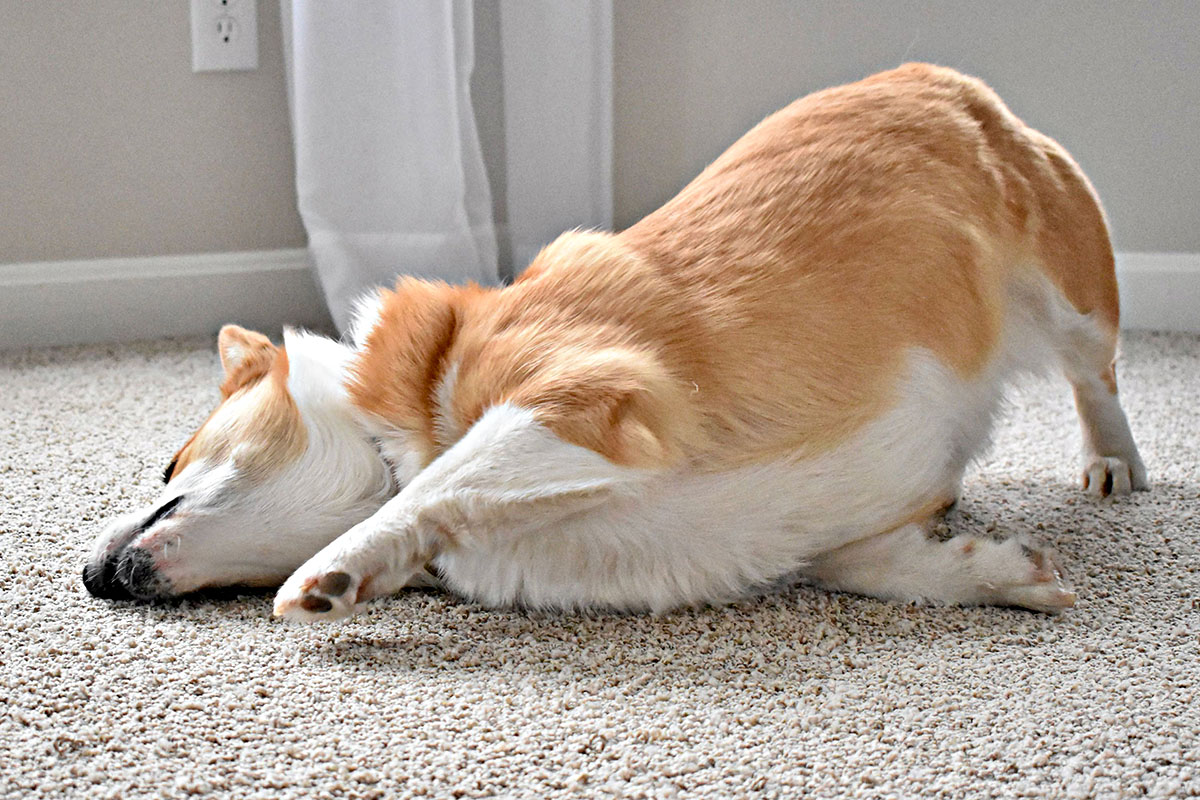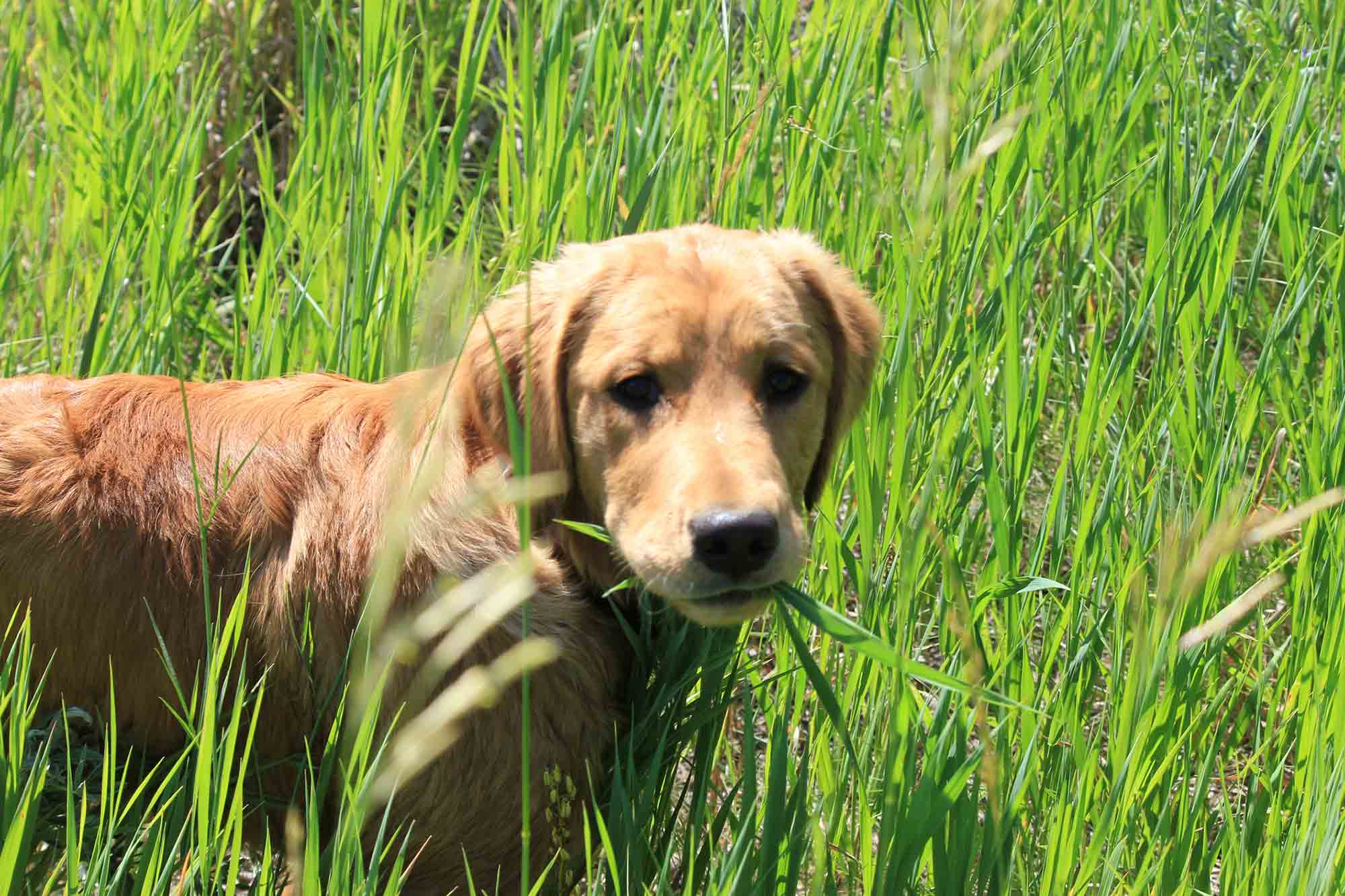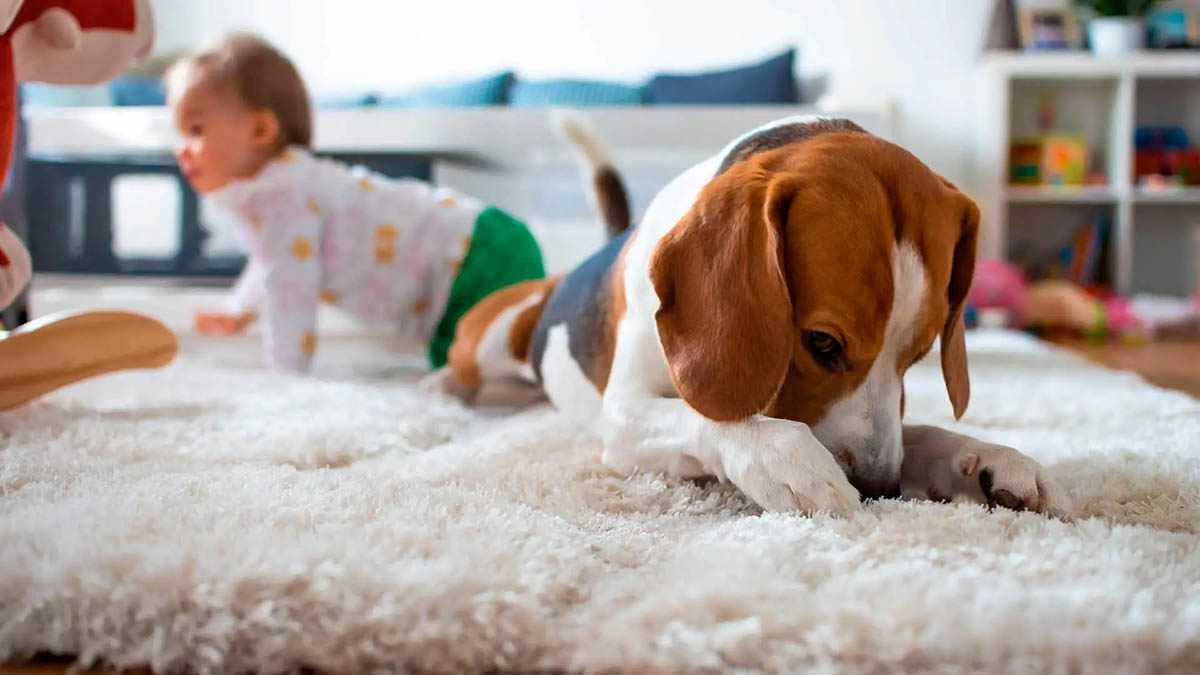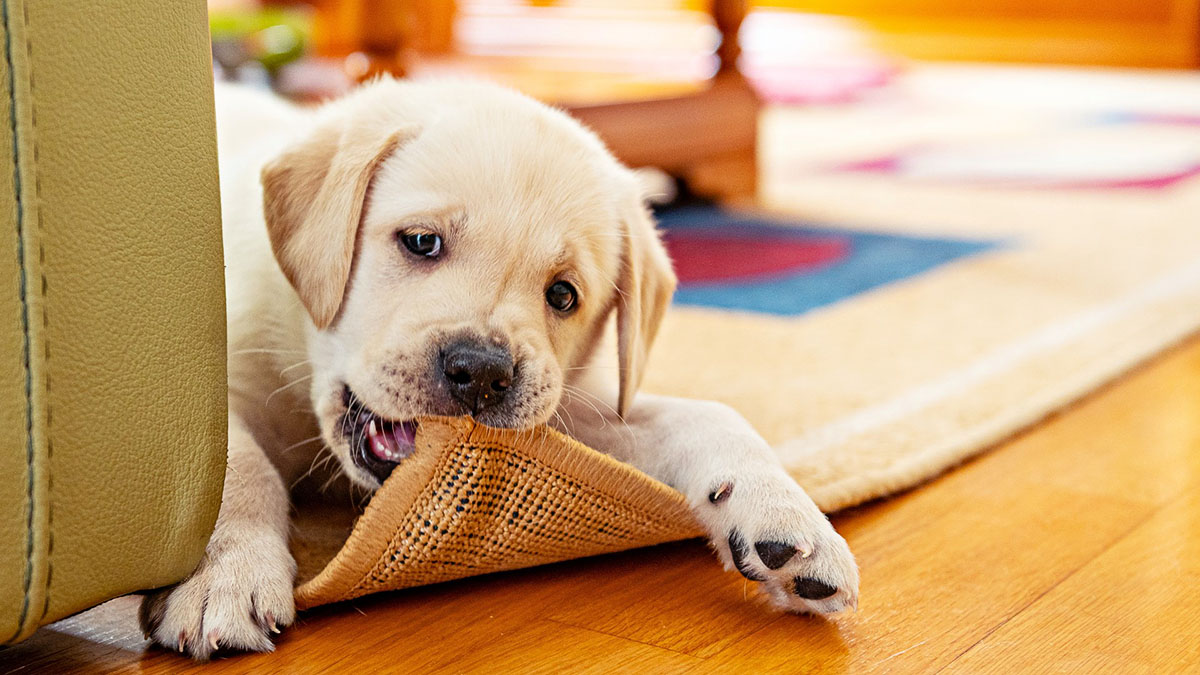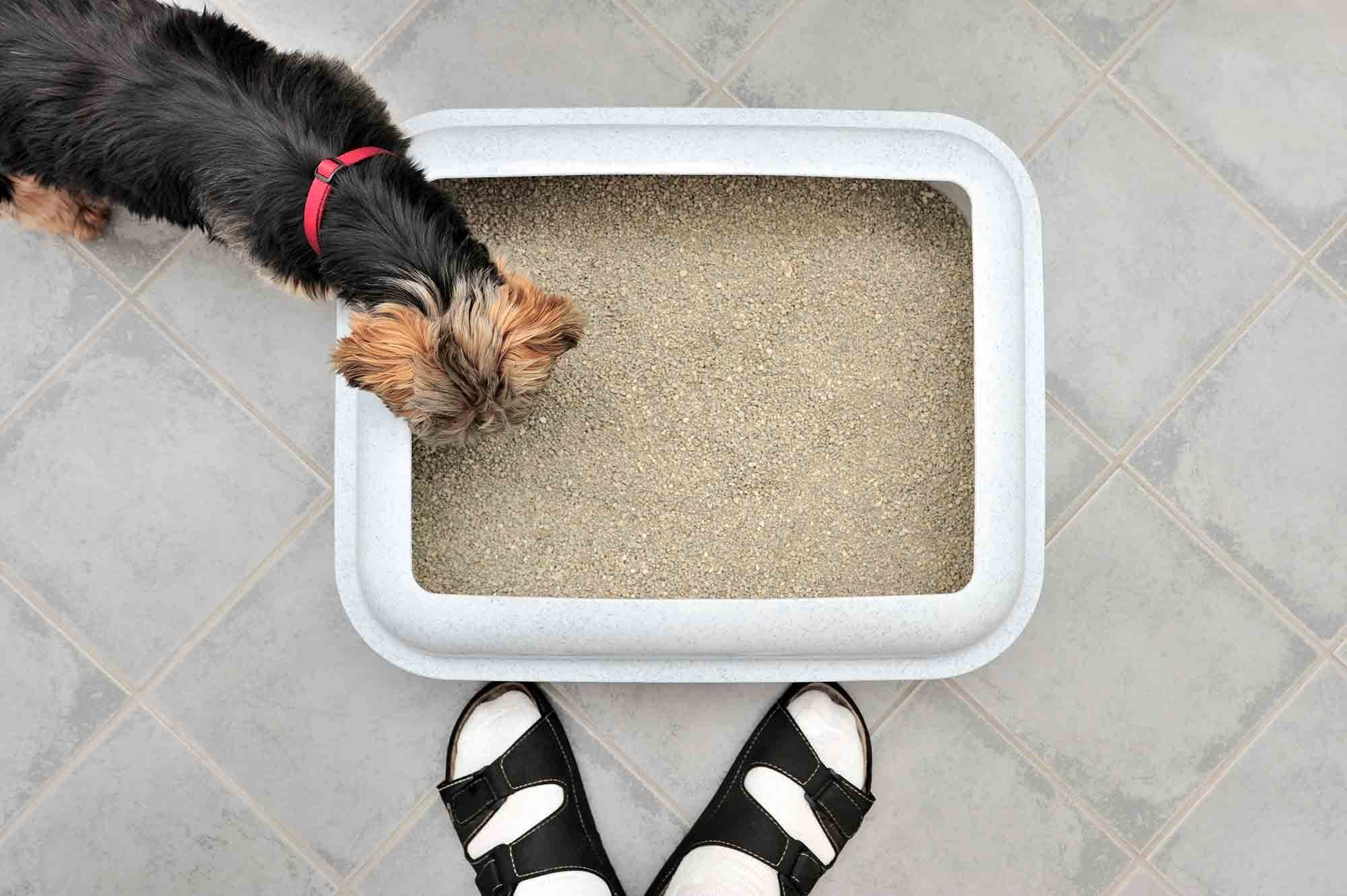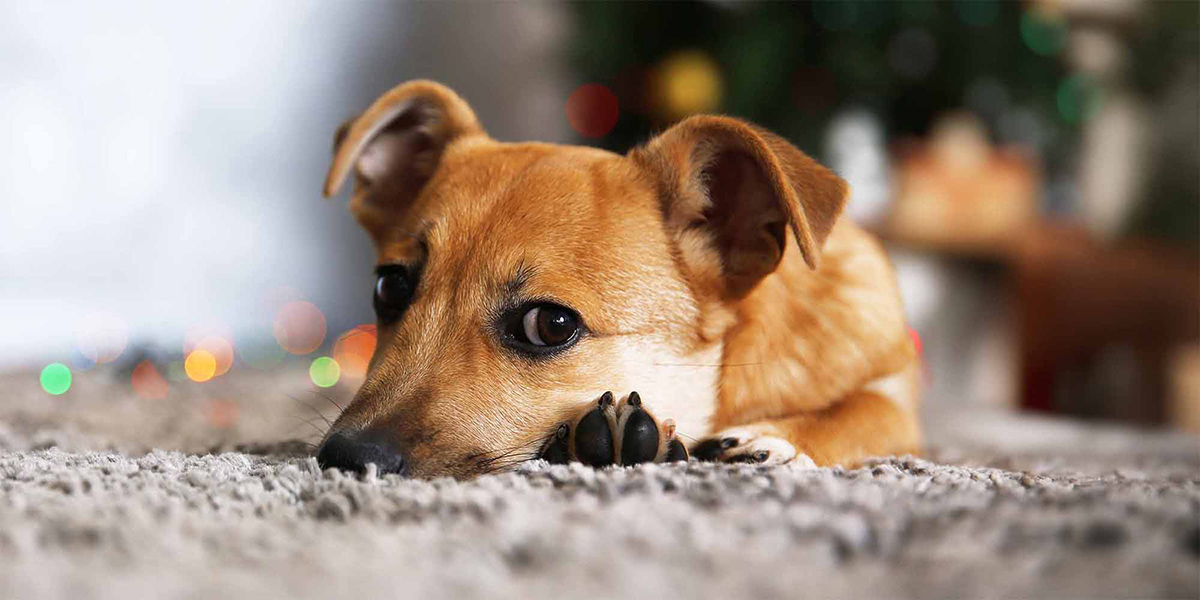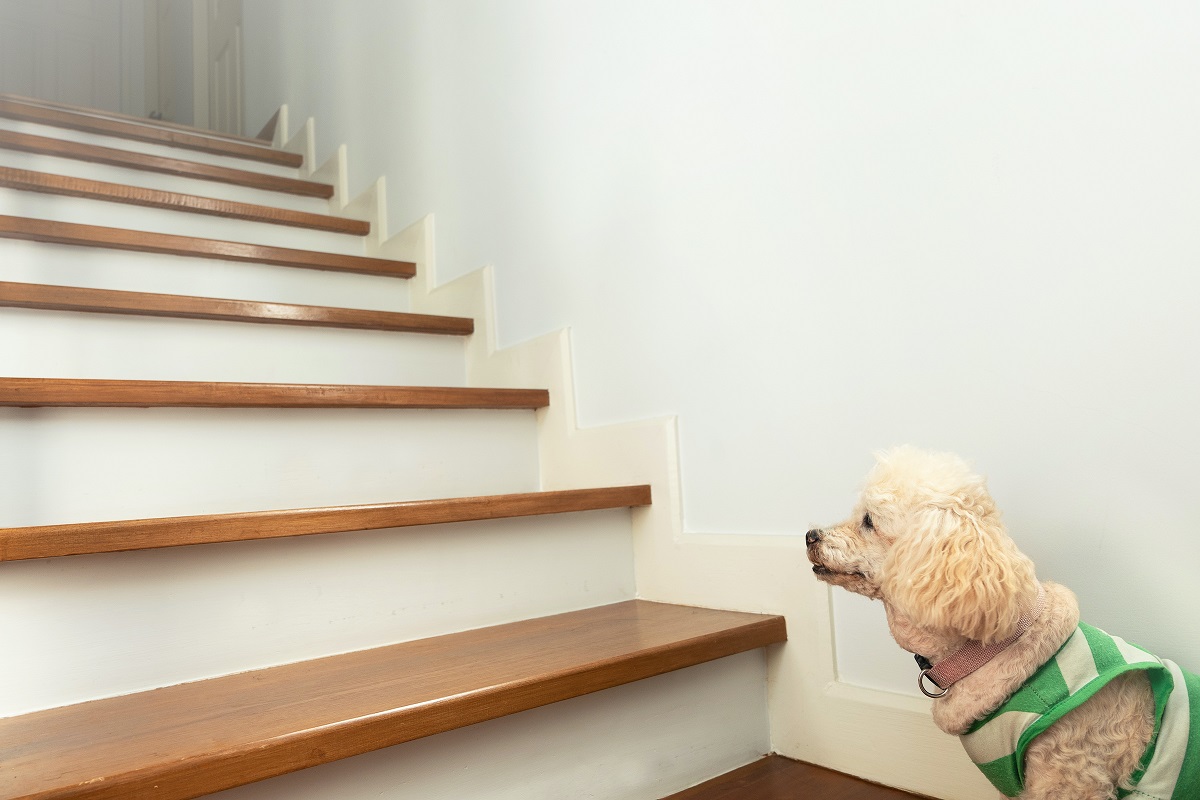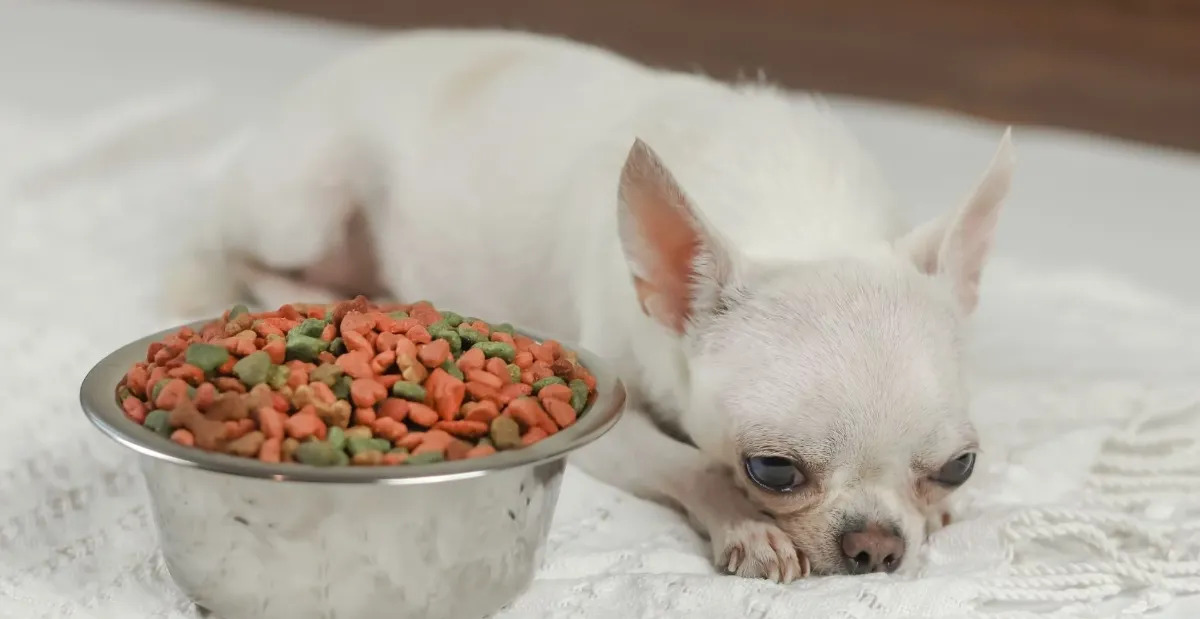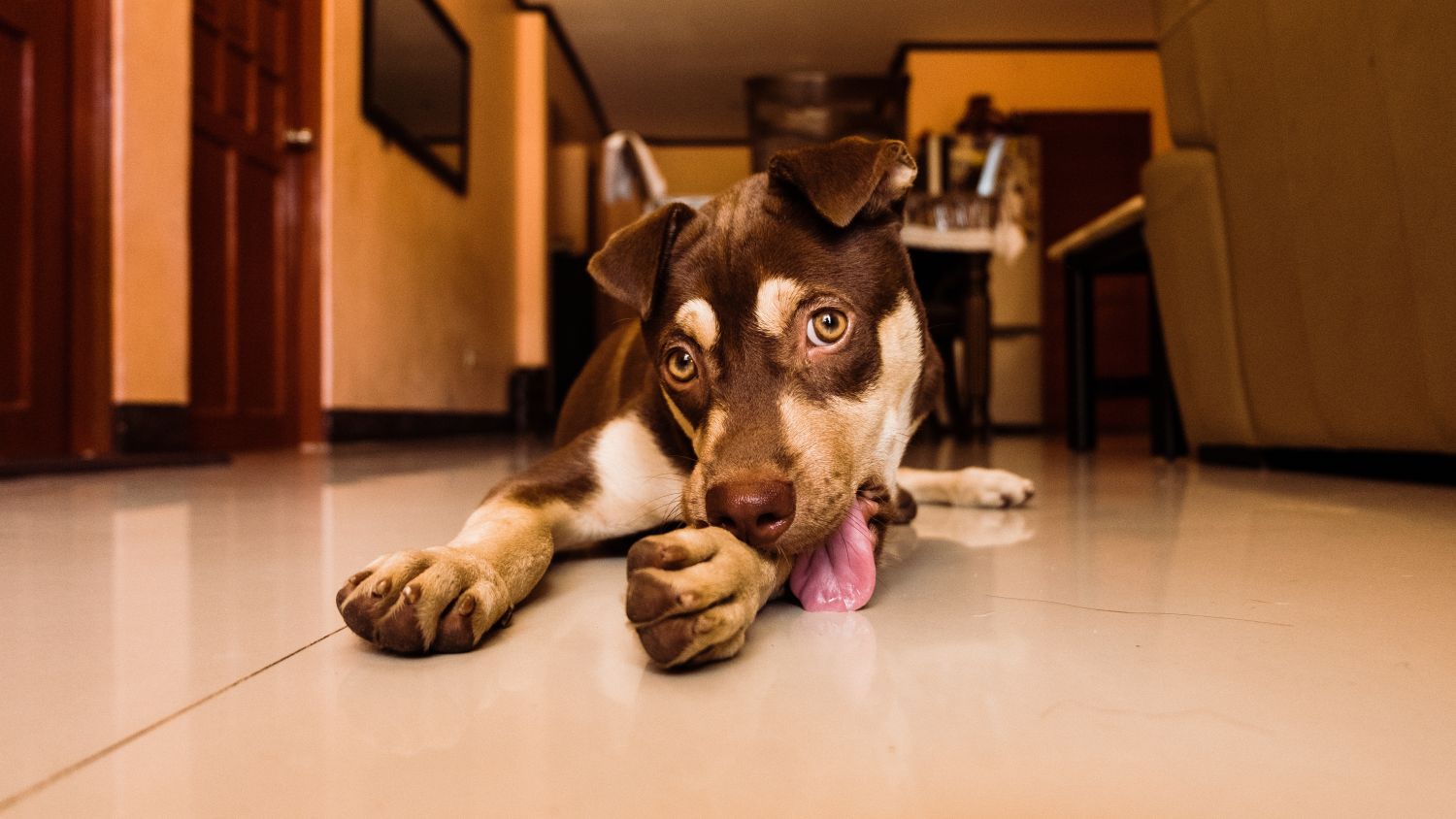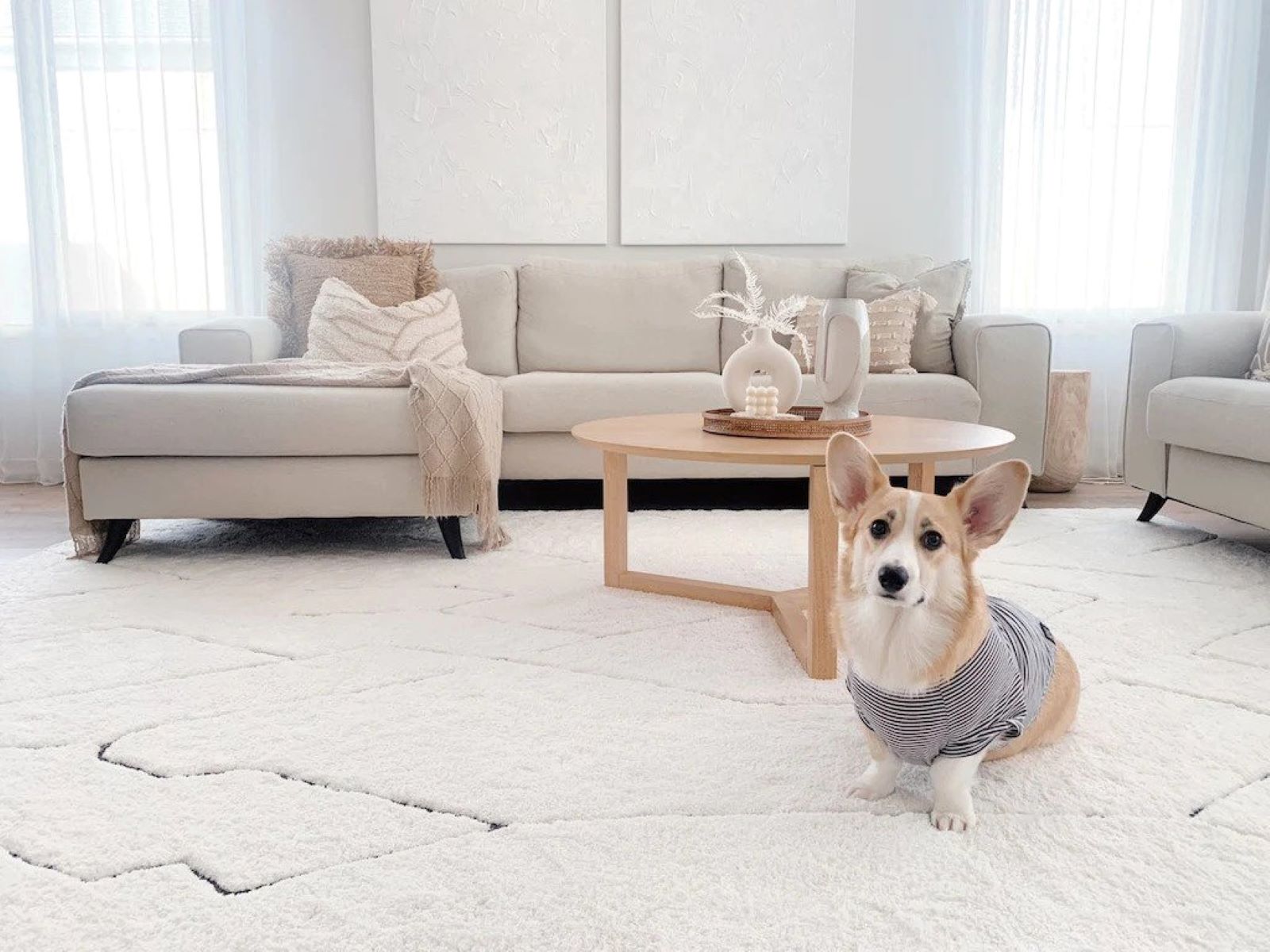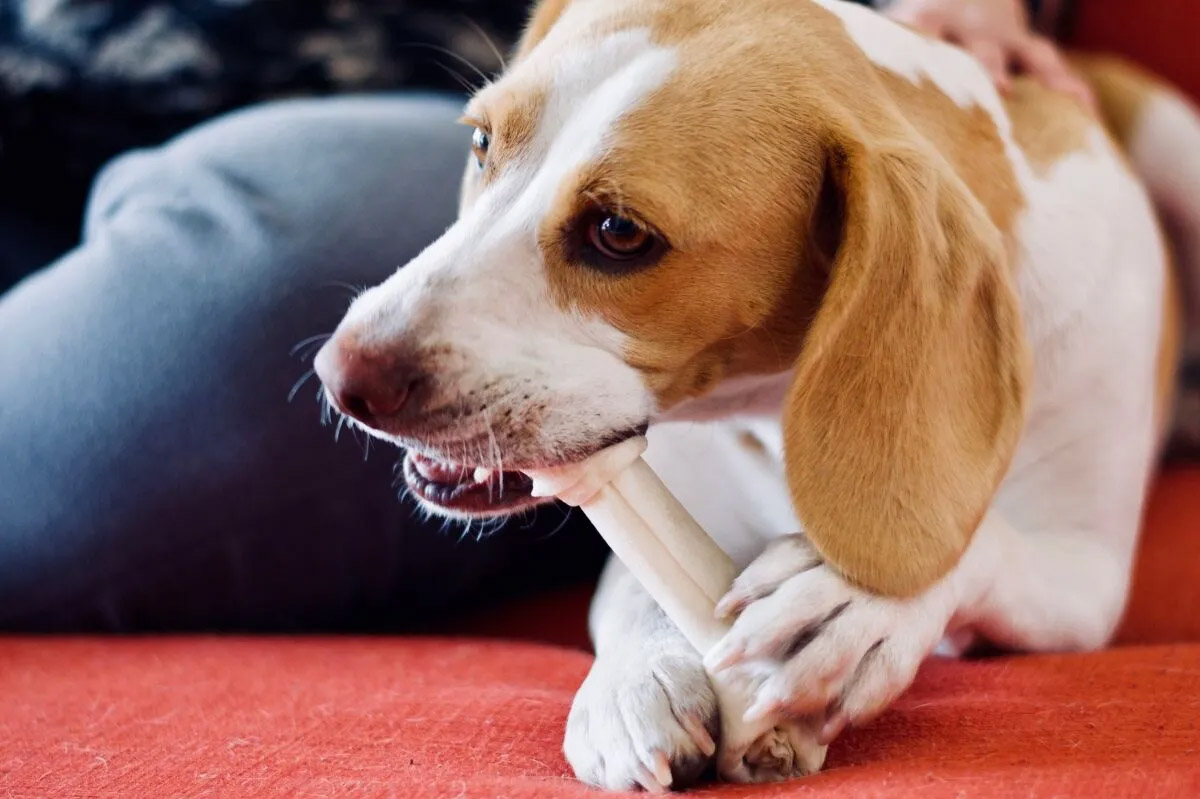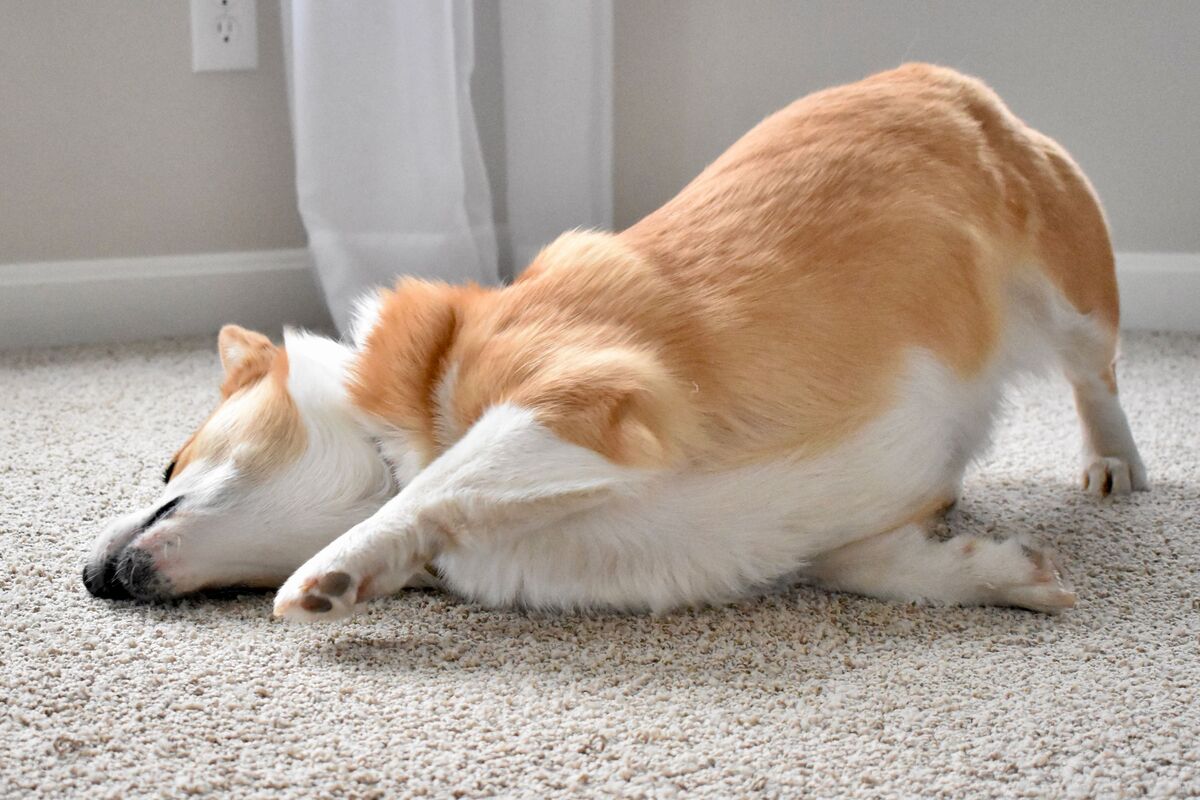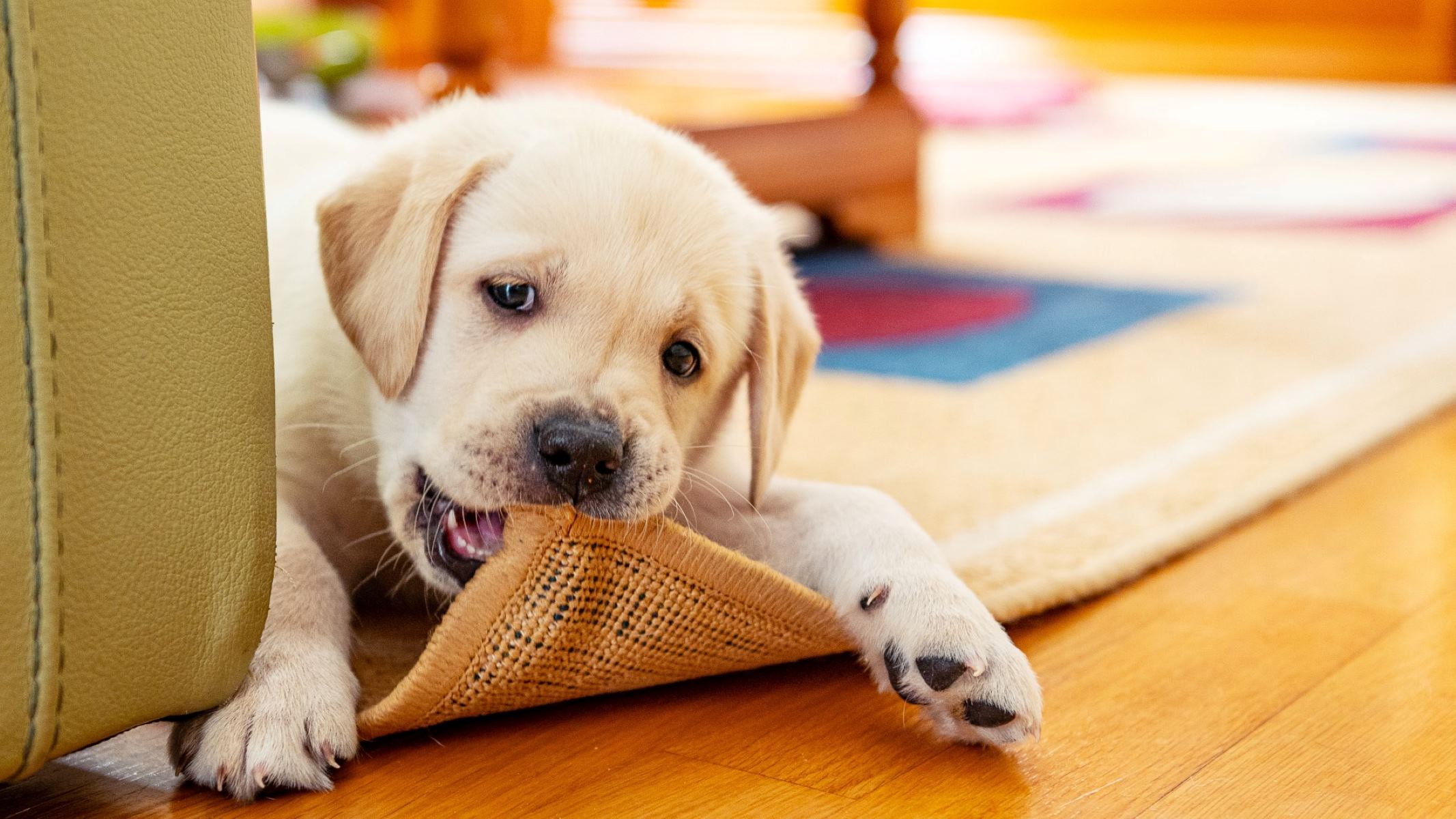

Articles
Why Is My Dog Eating The Carpet
Modified: February 25, 2024
Discover why your dog may be eating the carpet with informative articles on this common behavior among dogs. Find solutions and tips to curb this destructive habit.
(Many of the links in this article redirect to a specific reviewed product. Your purchase of these products through affiliate links helps to generate commission for Storables.com, at no extra cost. Learn more)
Introduction
Welcome to our article on the perplexing behavior of dogs eating the carpet. If you’ve ever found yourself wondering why your furry companion has developed a taste for chewing on your carpet, you’re not alone. Many dog owners have experienced this peculiar behavior, and it can be both frustrating and costly to deal with. In this article, we will explore the possible reasons behind this behavior, as well as provide tips on how to address and prevent it.
While it may seem odd for a dog to snack on carpet fibers, it’s important to remember that dogs are natural chewers. Chewing is a normal instinct for them, and it serves various purposes, such as relieving boredom, teething, and exploring their environment. However, when this natural behavior manifests in your dog munching on your carpet, it can become problematic.
There are several factors that can contribute to a dog’s carpet-eating habit. It could be due to underlying medical issues, behavioral problems, or environmental factors. By understanding these potential causes, you can better address the issue and find a solution that works for both you and your furry friend.
Key Takeaways:
- Understanding the underlying reasons for your dog’s carpet-eating behavior, such as medical issues, boredom, and environmental factors, is crucial in developing effective strategies to address and prevent this habit.
- By providing appropriate chew toys, increasing mental and physical stimulation, using positive reinforcement, and seeking professional help if needed, you can successfully redirect your dog’s chewing behavior and protect your carpets.
Read more: Why Is My Dog Licking The Carpet
Possible Reasons for Carpet Eating
There are several potential reasons why dogs may develop a habit of eating the carpet. These reasons can be broadly categorized into medical issues, behavioral problems, and environmental factors.
Medical Issues: In some cases, dogs may chew on carpet as a result of medical issues. Dental problems, such as gum inflammation or tooth pain, can cause dogs to seek relief by chewing on soft materials like carpet. Gastrointestinal issues, such as upset stomach or nutrient deficiencies, can also lead to pica, a condition characterized by the consumption of non-food items, including carpet fibers. If you suspect that your dog’s carpet-eating behavior is due to a medical issue, it is important to consult with your veterinarian for a proper diagnosis and treatment plan.
Behavioral Issues: Dogs are known to exhibit various behavioral issues that can contribute to carpet eating. Boredom and lack of mental stimulation can drive dogs to seek out unconventional activities, such as chewing on carpets. Anxiety and stress can also lead to destructive chewing behaviors, as dogs may use chewing as a coping mechanism. Additionally, certain breeds, such as retrievers and terriers, are more prone to chewing behaviors due to their natural instincts. Identifying the underlying behavioral issue and providing appropriate mental and physical stimulation can help redirect your dog’s chewing behavior away from the carpet.
Environmental Factors: The environment in which your dog lives can also play a role in their carpet-eating habits. Some dogs may be attracted to the texture or smell of the carpet, especially if it has been treated with chemicals or has food or scent residues. Lack of appropriate chew toys or other suitable outlets for chewing can also lead dogs to resort to chewing on carpets. Ensuring that your dog has access to safe and engaging chew toys, as well as keeping the environment free from potential triggers, can help discourage carpet eating.
Understanding the potential reasons behind your dog’s carpet-eating behavior is crucial in developing an effective strategy to address it. By considering medical issues, behavioral problems, and environmental factors, you can take the necessary steps to prevent further carpet destruction and promote a healthier chewing habit for your furry companion.
Medical Issues that Could Cause Carpet Eating
In some cases, dogs may engage in carpet-eating behavior due to underlying medical issues. These issues can range from dental problems to gastrointestinal disturbances, and it’s important to identify and address them to prevent further damage to your carpets and ensure your dog’s overall health and well-being.
Dental Problems: Dogs, like humans, can experience dental issues that cause discomfort, leading them to seek relief by chewing on objects such as carpets. Gum inflammation, tooth pain, or even dental infections can provoke this behavior. If your dog is frequently biting or gnawing on the carpet, it may be worth having their teeth and gums checked by a veterinarian. Regular dental care, including teeth cleanings and dental examinations, can help prevent or alleviate dental problems that may be contributing to the carpet-eating behavior.
Gastrointestinal Issues: Digestive problems can also play a role in a dog’s propensity to eat carpets. Conditions such as an upset stomach, gastritis, or nutrient deficiencies can lead to a condition called pica, where dogs consume non-food items, including carpet fibers. If your dog is experiencing frequent gastrointestinal issues, it’s vital to consult with your veterinarian to determine the underlying cause and develop an appropriate treatment plan. In some cases, dietary changes or supplements may be necessary to address these issues and reduce the dog’s urge to eat non-edible materials.
Medical Conditions: Certain medical conditions, such as inflammatory bowel disease (IBD) or hormonal imbalances, can contribute to abnormal eating behaviors, including carpet chewing. Dogs with IBD may exhibit pica as a result of malabsorption or nutrient deficiencies. Hormonal imbalances, such as an underactive thyroid (hypothyroidism), can also lead to increased appetite and strange eating habits. If you suspect that an underlying medical condition is contributing to your dog’s carpet-eating behavior, it is crucial to consult with a veterinarian who can diagnose and treat the specific condition.
Poisoning: In some cases, dogs may develop a sudden interest in eating carpets due to poisoning. This can occur if a carpet has been treated with toxic substances such as pesticides, cleaning agents, or other chemicals. If you suspect that your dog has ingested something toxic, seek immediate veterinary assistance. Symptoms of poisoning may include vomiting, diarrhea, lethargy, and changes in appetite or behavior. It is essential to keep potentially harmful substances out of your dog’s reach and use pet-safe cleaning products to avoid accidental poisoning.
Identifying and addressing any underlying medical issues is crucial in preventing further carpet-eating behavior. Consult with your veterinarian to rule out any medical conditions and develop an appropriate treatment plan. By addressing these medical concerns, you can help redirect your dog’s chewing habits to more appropriate outlets and protect them from harm.
Behavioral Issues that Could Cause Carpet Eating
Behavioral issues can play a significant role in a dog’s propensity to eat carpets. Understanding these underlying issues is essential in addressing and modifying their behavior, redirecting their chewing habits away from the carpet, and promoting healthier alternatives.
Boredom and Lack of Mental Stimulation: Dogs are intelligent and active animals that require mental and physical stimulation. When dogs are bored or not provided with enough outlets for their energy, they may resort to chewing on carpets as a way to alleviate their boredom. Lack of mental stimulation can lead to a variety of behavioral issues, including destructive chewing. To prevent carpet-eating behavior caused by boredom, ensure that your dog receives daily exercise, interactive playtime, and mental enrichment activities such as puzzle toys or training sessions.
Anxiety and Stress: Dogs may also chew on carpets as a result of anxiety or stress. Separation anxiety, fear of loud noises, or changes in the household environment can trigger this behavior. Chewing serves as a coping mechanism for dogs experiencing emotional distress. If your dog exhibits signs of anxiety or stress, such as excessive panting, pacing, or destructive behaviors, it’s important to address those underlying issues. Consult with a professional dog trainer or a veterinarian with behavioral expertise to develop a behavior modification plan. This may involve desensitization exercises, counter-conditioning, and creating a calm and secure environment for your dog.
Breed Characteristics: Certain dog breeds are more prone to chewing behaviors due to their natural instincts. Retrievers, terriers, and other hunting breeds, for example, have a strong instinct to chew on objects. It’s important to recognize that these behaviors are deeply rooted in their breed characteristics and require appropriate management. Providing them with safe and durable chew toys, as well as regular physical and mental exercise, can help redirect their chewing behavior away from the carpet.
Lack of Training and Boundaries: Dogs need consistent training and clear boundaries to understand what is acceptable and what is not. If a dog has not been taught proper chewing behavior or has been allowed unrestricted access to carpeted areas, they may develop a habit of chewing on carpets. It’s essential to establish and reinforce house rules, provide appropriate chewing alternatives, and use positive reinforcement techniques to redirect their focus onto more suitable objects. Crate training or gating off carpeted areas can also be effective in preventing access to carpets when unsupervised.
Addressing behavioral issues takes time, patience, and consistency. It’s crucial to provide your dog with appropriate outlets for their energy, address any underlying anxiety or stress, and set clear boundaries through training. By addressing these behavioral issues, you can redirect your dog’s chewing behavior and prevent further damage to your carpets.
Tip: Provide your dog with plenty of chew toys and regular exercise to help prevent boredom and anxiety, which can lead to destructive behaviors like carpet eating. If the behavior persists, consult a veterinarian to rule out any underlying health issues.
Environmental Factors that Could Cause Carpet Eating
Environmental factors can contribute to a dog’s inclination to chew on carpets. Understanding and modifying these factors can help discourage the behavior and redirect their chewing habits to more appropriate items.
Texture and Smell: Some dogs may be attracted to the texture or smell of carpets, especially if they have been treated with chemicals or have food or scent residues. For instance, carpets that have been recently cleaned or installed with new adhesives may emit odors that are appealing to dogs. It’s important to choose pet-friendly cleaning products and avoid using strong-smelling carpet fresheners or chemicals that may attract your dog’s attention. Additionally, providing alternative chewing options with various textures can help satisfy their desire to chew without resorting to carpets.
Lack of Chewing Alternatives: Dogs have a natural inclination to chew, and it’s crucial to provide them with appropriate outlets for this behavior. If a dog does not have access to suitable chew toys or bones, they may turn to the nearest available option, which could be your carpet. Invest in a variety of durable chew toys designed for dogs, such as rubber or nylon toys, that are safe for them to chew on. Rotate the toys to keep them interesting and engaging for your dog. This will help redirect their chewing behavior away from the carpet and onto more suitable items.
Unsupervised Access: Allowing your dog unsupervised access to carpeted areas can reinforce the behavior of chewing on carpets. When left alone, dogs may engage in destructive behaviors out of boredom or anxiety. Limiting their access to carpeted areas through the use of baby gates or closing doors can help prevent them from developing this habit. Crate training can also be an effective way to confine your dog when you are unable to supervise them, ensuring they are unable to chew on carpets when you’re not around.
Consistency in Discipline: Inconsistent discipline can confuse dogs and make it difficult for them to understand what is acceptable behavior. If your dog is allowed to chew on carpets sometimes but scolded at other times, the mixed signals can lead to continued chewing habits. It’s important to be consistent in your discipline and redirect their attention to appropriate chew toys whenever they show interest in the carpet. Positive reinforcement, such as praise or rewards, can help reinforce good behavior and deter them from chewing on the carpet.
By addressing the environmental factors that contribute to carpet-eating behavior, you can create an environment that discourages this habit. Providing suitable alternatives, limiting access to carpeted areas, and maintaining consistency in discipline can help redirect your dog’s chewing behavior and protect your carpets.
Read more: Why Is My Dog Ripping Up The Carpet
How to Stop Your Dog from Eating the Carpet
Dealing with a dog that is eating the carpet can be frustrating and concerning. However, with the right approach and consistent effort, you can help redirect their chewing behavior and prevent further damage to your carpets. Here are some effective strategies to stop your dog from eating the carpet:
1. Provide Appropriate Chew Toys: Make sure your dog has access to a variety of safe and durable chew toys. These toys should be specifically designed for dogs and provide different textures and shapes to keep them engaged. When you catch your dog chewing on the carpet, redirect their attention to the chew toy and praise them when they engage with it.
2. Increase Physical and Mental Stimulation: Dogs often resort to destructive chewing out of boredom. Ensure that your dog gets enough physical exercise and mental stimulation through daily walks, playtime, and interactive toys or puzzles. A tired dog is less likely to engage in destructive behaviors.
3. Use Positive Reinforcement: Positive reinforcement is a powerful tool in modifying your dog’s behavior. When your dog chooses to chew on their toys instead of the carpet, praise and reward them with treats or verbal affirmations. This positive association will encourage them to repeat the desired behavior.
4. Create a Dog-Friendly Environment: Make sure your home environment is safe and free from objects that may tempt your dog to chew, including carpet edges or loose fibers. Keep carpeted areas off-limits by using baby gates, closing doors, or utilizing training pens. This will prevent your dog from having unsupervised access to the carpet.
5. Supervise and Interrupt Chewing Behavior: Supervise your dog when they are around carpeted areas. If you catch them chewing on the carpet, interrupt the behavior with a firm “no” or a loud noise. Redirect their attention to an appropriate chew toy and reward them when they engage with it instead.
6. Seek Professional Help: If your dog’s carpet-eating behavior persists or becomes a significant problem, consider seeking help from a professional dog trainer or behaviorist. They will be able to assess your dog’s specific situation, identify underlying issues, and provide personalized guidance and training techniques to address the problem.
7. Consult with Your Veterinarian: If you suspect that your dog’s carpet-eating behavior is due to underlying medical issues, it’s important to consult with your veterinarian. They can conduct a thorough examination and recommend any necessary treatments or dietary changes that may help alleviate the behavior.
Remember, training takes time and patience. Consistency is key in effectively stopping your dog from eating the carpet. By providing appropriate chew toys, increasing stimulation, using positive reinforcement, creating a dog-friendly environment, supervising their behavior, seeking professional help if needed, and consulting with your veterinarian, you can successfully redirect your dog’s chewing behavior and protect your carpets.
Prevention Tips to Keep Your Dog from Eating the Carpet
Preventing your dog from eating the carpet is essential to maintain a safe and healthy environment for both your furry friend and your home. By implementing these preventative measures, you can reduce the likelihood of your dog developing a carpet-chewing habit:
1. Properly Supervise and Limit Access: Supervise your dog when they are in areas with carpeted floors. If you cannot closely monitor them, consider confining them to a crate or a designated dog-proofed area. Limiting their access to carpeted areas when unsupervised significantly reduces the opportunity for them to engage in carpet chewing.
2. Puppy-Proof Your Home: If you have a young puppy, make sure to puppy-proof your home by removing any loose carpet edges or exposed fibers that may tempt them to chew. Secure carpets properly and tuck in loose ends to eliminate potential chewing triggers.
3. Provide Ample Chewing Alternatives: Dogs have a natural instinct to chew, and it’s essential to provide them with appropriate chew toys. Offer a variety of toys made specifically for dogs, such as rubber or nylon chew toys, bully sticks, or dental chews. Introduce them to your dog and rotate them regularly to keep them interesting and engaging.
4. Teach and Reinforce Proper Chewing Behavior: Train your dog to understand the difference between acceptable and unacceptable chewing behavior. When you catch them chewing on the carpet, redirect their attention to a chew toy and praise them when they engage with it. Consistently reinforce this behavior to create a positive association with the appropriate chew toys.
5. Increase Mental and Physical Stimulation: A tired and mentally stimulated dog is less likely to engage in unwanted chewing behavior. Ensure your dog gets regular exercise through walks, runs, or play sessions. Engage them in puzzle toys, training exercises, or interactive games to keep their minds engaged and fulfill their need for mental stimulation.
6. Use Bitter Tasting Deterrents: Apply bitter-tasting deterrents on areas of the carpet that your dog is prone to chew on. These products, available at pet stores, have a strong taste that discourages dogs from chewing on the treated surface.
7. Consult a Professional: If your dog’s carpet-eating behavior persists or becomes a significant problem, consult with a professional dog trainer or behaviorist. They can assess your dog’s specific situation and provide tailored guidance and training techniques to address and prevent the behavior.
8. Regular Veterinary Check-ups: Schedule regular check-ups with your veterinarian to ensure your dog’s overall health and to address any potential underlying medical issues that may contribute to carpet chewing. A healthy and content dog is less likely to engage in destructive chewing behaviors.
By implementing these prevention tips, you can create a safe and chew-friendly environment for your dog while effectively discouraging them from chewing on the carpet. Remember to be patient, consistent, and provide appropriate alternatives to redirect their chewing behavior. With time and proper training, your dog can learn to have appropriate chewing habits and keep your carpets intact.
Conclusion
Dealing with a dog that is eating the carpet can be a challenging issue for many pet owners. However, by understanding the possible reasons behind this behavior and implementing appropriate strategies, you can effectively prevent and address the problem.
In this article, we discussed the possible reasons for dogs eating the carpet, including medical issues, behavioral problems, and environmental factors. Dental problems, gastrointestinal issues, anxiety, and boredom are just a few of the factors that can contribute to this behavior. It’s important to identify and address the underlying cause to effectively control and redirect your dog’s chewing habits.
We also provided various tips and strategies to stop your dog from eating the carpet. These included providing appropriate chew toys, increasing mental and physical stimulation, using positive reinforcement, creating a dog-friendly environment, supervising their behavior, seeking professional help if needed, and consulting with your veterinarian to address any underlying medical issues.
Prevention is always better than trying to stop an already established behavior. By implementing preventative measures such as proper supervision, puppy-proofing your home, providing ample chewing alternatives, teaching and reinforcing proper chewing behavior, increasing mental and physical stimulation, using deterrents, and regularly consulting with professionals and veterinarians, you can significantly reduce the likelihood of your dog developing a carpet-chewing habit in the first place.
Remember, training takes time, patience, and consistency. It’s important to approach this issue with understanding and kindness, as chewing is a natural behavior for dogs. By providing them with appropriate outlets for chewing, addressing any underlying issues, and creating a stimulating environment, you can help your furry friend develop healthy chewing habits that protect your carpets and promote their overall well-being.
So, if you find your dog taking a liking to your carpets, don’t fret. Take the necessary steps to understand the cause and work towards a solution. With proper training, supervision, and patience, you can teach your beloved companion to chew on appropriate items, leaving your carpets intact and your bond stronger than ever.
Frequently Asked Questions about Why Is My Dog Eating The Carpet
Was this page helpful?
At Storables.com, we guarantee accurate and reliable information. Our content, validated by Expert Board Contributors, is crafted following stringent Editorial Policies. We're committed to providing you with well-researched, expert-backed insights for all your informational needs.
